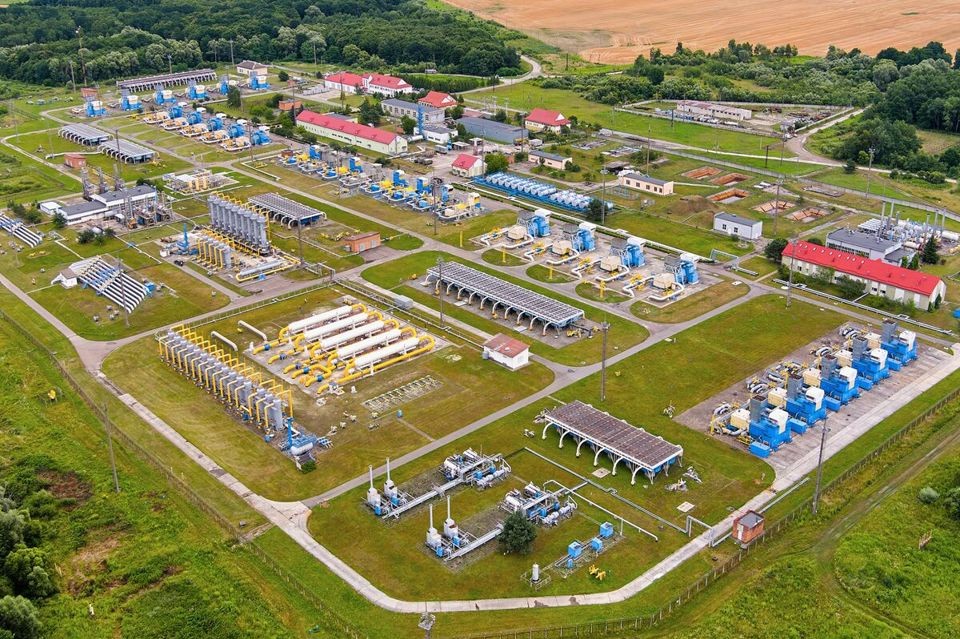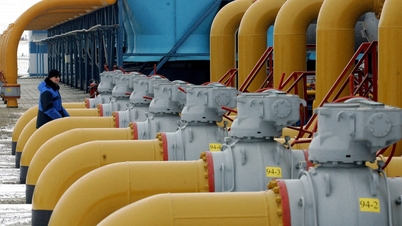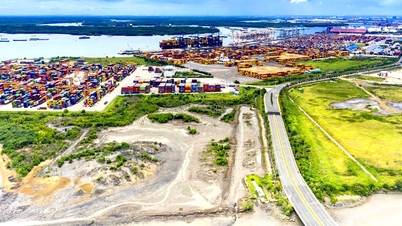 |
| Bilche-Volytsko-Uherske gas storage facility in Ukraine. (Source: Ukrtransgaz) |
As summer approaches, the European Union (EU) faces an unusual situation: Too much gas, warn Akos Losz and Ira Joseph, two researchers at Columbia University's Center on Global Energy Policy.
The fuel stockpiling will help the 27-member bloc avoid a repeat of the energy crisis of 2022. The bloc’s gas reserves are now more than 70% full and are expected to reach 100% capacity by the end of August 2023.
Last August, EU gas prices rose to an all-time high of 350 euros ($380) per megawatt-hour as Russia cut supply. Prices then fell in 2023, partly due to milder-than-expected winter weather.
The spike in 2022 has prompted leaders to step in, with EU governments spending €646 billion to protect companies and consumers, according to the Bruegel consultancy.
Germany’s gas storage – which accounts for 22% of the EU’s total storage capacity – could provide enough supply for the bloc, but it is not enough to balance price fluctuations across the EU, so the bloc is looking further afield, said Kamil Lipinski of the Polish Institute of Economics (PIE).
European Commission (EC) spokesman Tim McPhie revealed that EU member states will need to fill up to 90% of storage capacity by November 2023.
“Europe needs to make use of as much of Ukraine’s underground storage capacity as possible to meet the winter surge in demand,” said Jacopo Casadei of energy consultancy Energy Aspects.
In 2020, Ukraine harmonized its legal framework with the EU. Kiev also cut gas storage costs, reduced tariffs and customs duties at domestic storage facilities for traders from the 27 EU member states.
Two months ago, Ukrtransgaz, a gas storage operator in Ukraine, was certified under EU gas storage regulations. The Ukrainian market also offers fixed storage capacity, avoiding spot market fluctuations.
In addition, the country has a large gas transportation network. For decades, Ukraine has been a transit country for Russian energy to Europe. Ukraine's gas storage capacity currently reaches 31 billion m³ (bcm) - the largest in Europe.
Currently, Ukrtransgaz, the company that operates Ukraine's gas storage facilities, is ready to lease out one-third of its storage capacity, enough to meet about 10% of the EU's gas demand in March 2023.
Meanwhile, Naftogaz, the parent company of Ukrtransgaz, can provide 10 bcm of storage capacity to countries in the region.
On the European side, Bloomberg reported that officials are planning to ship excess natural gas to Ukraine's Bilche-Volytsko-Uhersky underground gas storage (UGS) facility, located 96 kilometers from the border with Poland.
However, the above plan may still encounter "stumbling blocks".
For gas storage in Ukraine to be viable, prices need to fall low enough to cover the cost of renting storage space. The EU may also need to step in to provide relief for potential losses related to the conflict in Ukraine.
Russia is still sending gas through Ukraine, which, in a tight gas market, could be another way to put pressure on Europe, said Anna Mikulska, a senior fellow at the Center for Energy Studies at Rice University’s Baker Institute for Public Policy.
Meanwhile, the insurance industry is staying away from Ukraine. Companies operating gas storage facilities in Ukraine will also be keeping an eye on prices and whether the EU is willing to provide insurance support.
In this regard, according to Mr. Tim McPhie, the EU is exploring how guarantees issued by public institutions could provide adequate coverage for natural gas stored in Ukraine.
"But time is running out," the EC spokesman stressed.
Source






![[Photo] General Secretary attends the parade to celebrate the 80th anniversary of the founding of the Korean Workers' Party](https://vphoto.vietnam.vn/thumb/1200x675/vietnam/resource/IMAGE/2025/10/11/1760150039564_vna-potal-tong-bi-thu-du-le-duyet-binh-ky-niem-80-nam-thanh-lap-dang-lao-dong-trieu-tien-8331994-jpg.webp)
![[Photo] Discover unique experiences at the first World Cultural Festival](https://vphoto.vietnam.vn/thumb/1200x675/vietnam/resource/IMAGE/2025/10/11/1760198064937_le-hoi-van-hoa-4199-3623-jpg.webp)


























![[Photo] Opening of the World Cultural Festival in Hanoi](https://vphoto.vietnam.vn/thumb/1200x675/vietnam/resource/IMAGE/2025/10/10/1760113426728_ndo_br_lehoi-khaimac-jpg.webp)






































































Comment (0)